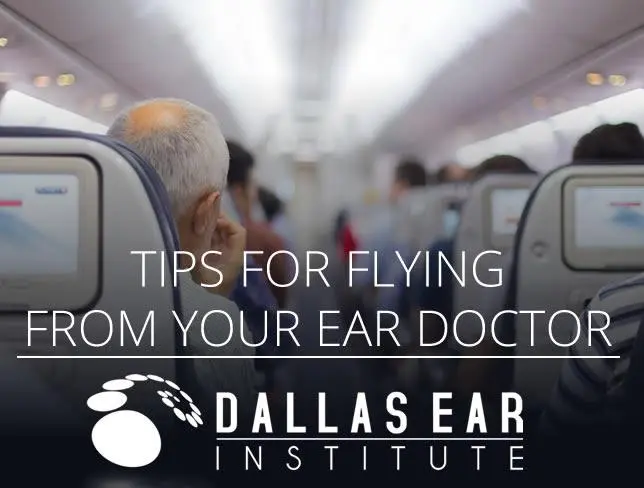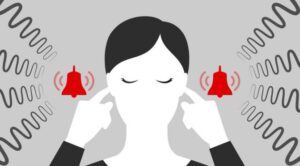Flying can be difficult on your ears. Problems that arise during or after flying are helped by understanding them. Your middle ear is an air containing cavity behind your eardrum that requires the pressure to be continually equalized so that the ear drum doesn’t bulge out or retract in (and cause severe pain).
Most problems during flying are related to the eustachian tube. The eustachian tube, or plumbing of your ear, is a paired structure (one for each ear) that connects the middle ear (behind the eardrum) to the back of your nose. The eustachian tube acts as a valve to regulate pressure in the middle ear. The valve is opened by swallowing, chewing, or yawning, which activate the muscles that open the middle ear drainage tube.

If the eustachian tube stays closed during a change in pressure, trauma occurs in the middle ear. This can occur with ascent and descent during air flight. Symptoms can include ear pain/pressure, hearing loss, tinnitus, and dizziness. This is the reason that you will often witness babies or young children crying during the airplane climb or landing, as their eustachian tubes are not opening appropriately and pain occurs.
Eustachian tube problems can be prevented by following these guidelines, especially during descent. Make sure you are awake- this allows you to be aware of any changes in pressure in your middle ear. Chewing gum or eating/drinking during these changes in pressure ensures you swallow and activate the muscles that open your eustachian tube and equalize the pressure in your middle ear. If you still feel discomfort, pinch your nose and blow against your closed nostrils gently. You should feel your ears equalize and this will be accompanied by an increased awareness of ambient sound.
If these measures do not work and your symptoms persist even after the completion of your flight, you may need to see your doctor about an oral or nasal decongestant, or even placement of a ventilation tube in your eardrum if problems persist.
Vestibular (balance) problems can also occur during flight. There are limited visual cues in the cabin of a commercial jet and this can be disorienting. Because you do not have landmarks to focus your vision on, and because of the significant forces exerted on the balance system during turbulence, you may experience motion sickness. Individuals who suffer from seasickness and car sickness are more prone to having nausea and other problems on a flight. The stimulation can leave the vestibular system sensitive even after the flight, resulting in the illusion that one is still on the plane and in motion even when on solid ground.
Vestibular issues can be prevented by ensuring a full night’s rest prior to your flight– this decreases the sensitivity of your balance system. Make sure you are well hydrated before and during the flight by drinking plenty of water. Over the counter vestibular suppressants such as Bonine or Dramamine can be taken before the flight to prevent vestibular issues if you have suffered them before.
Flying is generally very well tolerated. When ear problems occur, though, it can make a routine flight into a very uncomfortable, stressful experience. Following the guidelines above will generally prevent major issues associated with airplane travel. If your symptoms persist, don’t hesitate to see your Dallas Ear Institute provider for further evaluation.



